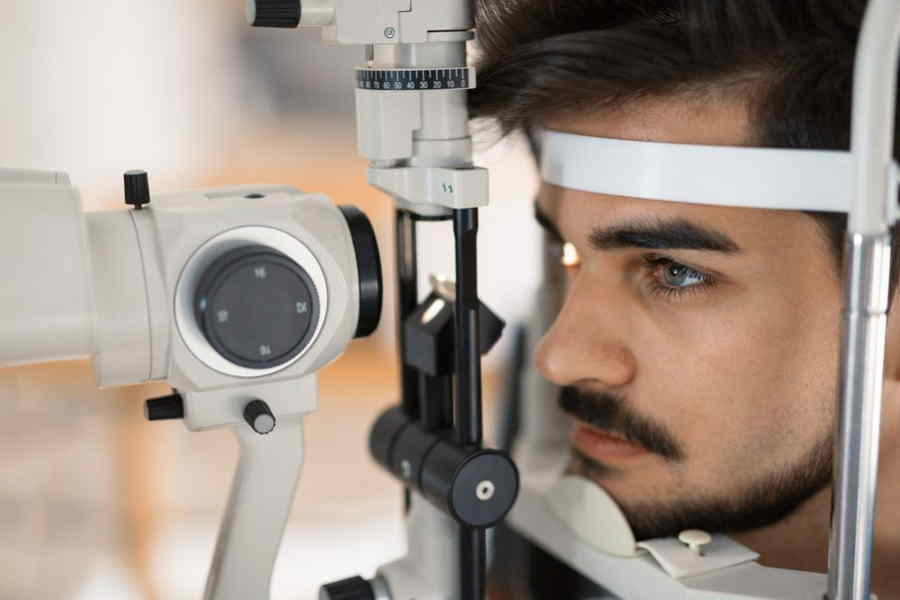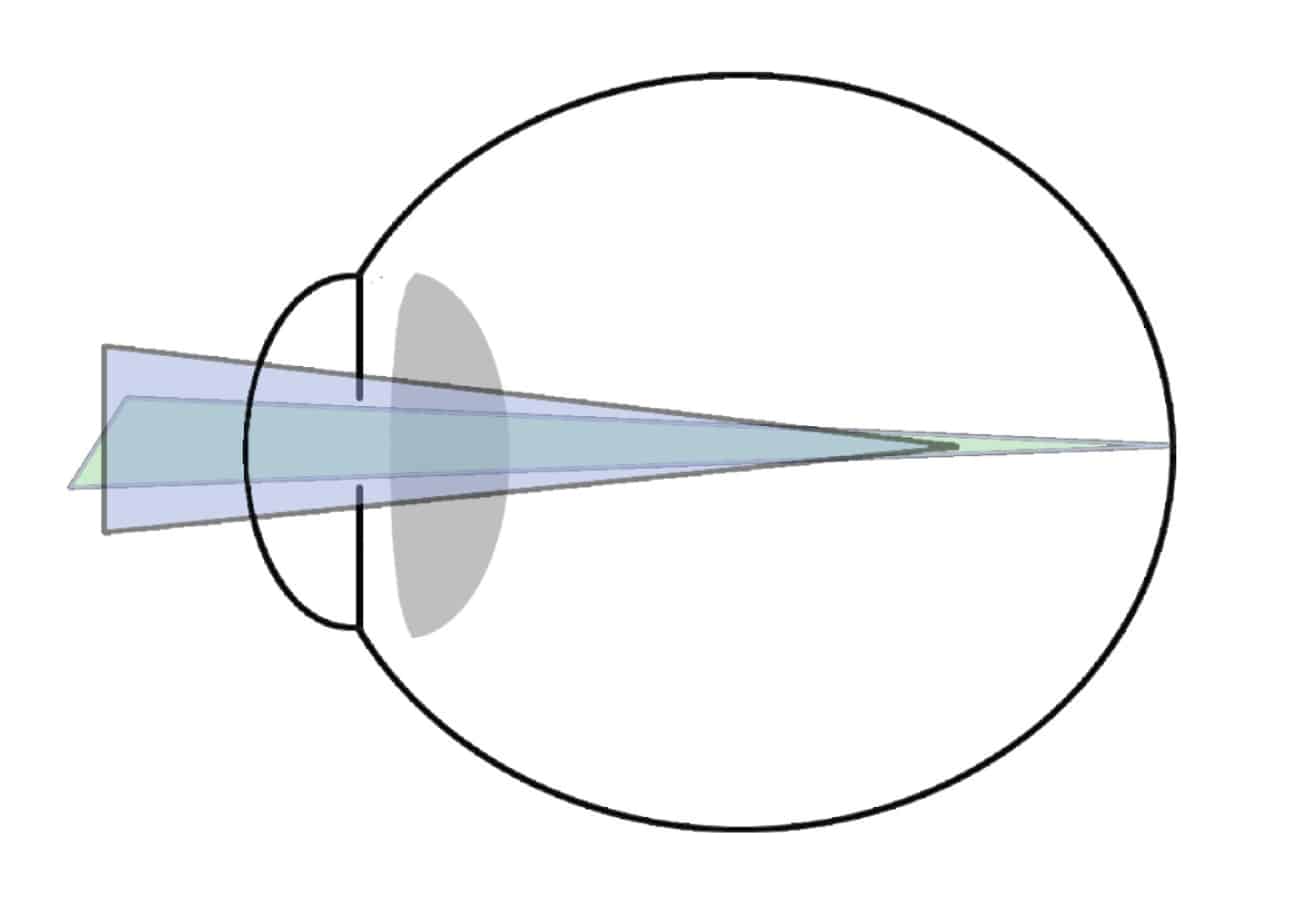Types of astigmatism
El astigmatism It is a refractive defect that causes blurred vision due to a problem in the curvature of the cornea or in the shape of the lens. When any of these parts of the eye has defects in its shape, the light of the objects is focused on several points of the retina and prevents seeing clearly.
There are three types of astigmatism and they represent one of the most common visual problems in the world population.
Types of astigmatism
El astigmatism It is a refractive defect that causes blurred vision due to a problem in the curvature of the cornea or in the shape of the lens. When any of these parts of the eye has defects in its shape, the light of the objects is focused on several points of the retina and prevents seeing clearly.
There are three types of astigmatism and they represent one of the most common visual problems in the world population.
Types of astigmatism
When astigmatism is caused by a corneal defect, the outermost part of the eye and that covers the pupil and iris, we consider that we are facing a corneal astigmatism. When the defect is in the lens anatomy se le Llama lenticular astigmatism.
Also, astigmatism can be:
- Regular: The meridians are perpendicular and form an angle of 90 °. Most people suffer from regular corneal astigmatism.
- Irregular: The meridians are not perpendicular due to injury, scarring, or thinning of the cornea.

At the time of diagnosing astigmatism, the ophthalmologist should review the ocular structure to determine the degree of the refractive defect taking into account the three types of astigmatisms that exists:
- myopic astigmatism: One or both axes focus myopic, in other words, ahead of the retina.
- hyperopic astigmatism: One or both axes focus hyperopes, that is, by behind the retina.
- Mixed astigmatism: One axis focuses myopic and the other hypermetropic.
myopic astigmatism
El myopic astigmatism, is a type of astigmatism where one or both axes are focused in front of the retina due to an irregularity in the cornea.
Two types of myopic astigmatism:
- Simple myopic astigmatism: This type of astigmatism occurs when one axis is focused on the retina while the other axis focuses in front of the retina.
- Compound myopic astigmatism: We are faced with this type of astigmatism when both axes focus in front of the retina.

Simple myopic astigmatism

Compound myopic astigmatism
The cornea is normally spherical and uniform in shape; however, in the eye with myopic astigmatism, the cornea presents a irregular curvature what can cause blurred vision or even that some images are perceived elongated. In this type of astigmatism the light is focused in front of the retina.
El Myopic astigmatism usually manifests itself in the following way:
- Sensitivity to light.
- Difficulty to focus.
- Tired sight.
- Tension headache after doing activities like reading.
- Burning eyes.
hyperopic astigmatism
El hyperopic astigmatism it's a type of astigmatism where one or both axes are focused behind the retina. This is due to a defect in the curvature of the cornea that consequently makes it difficult for us to correctly focus on objects that are far and near.
Two types of hyperopic astigmatism:+
- simple hypermetropic astigmatism: This type of astigmatism occurs when one axis is focused on the retina while the other axis focuses behind the retina.
- compound hyperopic astigmatism: We are faced with this type of astigmatism when the two axes focus behind the retina.

simple hypermetropic astigmatism

compound hyperopic astigmatism
Those who suffer from this type of astigmatism have Difficulty appreciating details of objects and, unlike the myopic type, the light is focused behind the retina.
El Hypermetropic astigmatism manifests as follows:
- Blurred vision at any distance.
- Distorted image of objects.
- Eye pain.
- Headache.
- Visual fatigue.
- Strabismus in children.
Mixed astigmatism
El mixed astigmatism is type of astigmatism less common and it occurs when one meridian focuses nearsighted, and the other meridian focuses hyperopically. That is to say, one axis is focused in front of the retina y the other axis is focused behind the retina.
The main cause of this condition is the genetic load, although it is also associated with problems during refractive surgery, enfermedades, injury y Trauma.
El Mixed astigmatism causes the following symptoms:
- Headache.
- Eye irritation.
- Visual fatigue
- Sharp images in one eye and blur in the other.
- The circles are seen as oval and the lights have tails.
- The person often squints or tilts their head to one side to see better.

Mixed astigmatism
Astigmatism treatment
The options of treatment for any type of astigmatism they are the same.
A person can correct this vision problem using glasses, contact lenses or through a refractive surgery; However, it is the ophthalmologist who will determine the best option to treat astigmatism.
Glasses
Wearing glasses is the easiest way to correct astigmatism quickly.
After the eye evaluation, the ophthalmologist offers the patient the formula with which he should send the glasses to the glasses that will allow him to recover the visual sharpness.
People who prefer this treatment should keep in mind that the use of prescription glasses for night driving is mandatory.
Contact lenses
The lenses mold the cornea to eliminate the imperfections that cause astigmatism.
This option offers a better focus of the image and a campor more visual amplio.
Contact lenses are more expensive than glasses and require the person to have a hygiene habit to prevent contact lenses from becoming infected.
Laser refractive surgery
La refractive surgery It is the only option it offers treat astigmatism, and other refractive defects, definitely. The most used techniques for astigmatism operation are:
Surgery FemtoLasik: It is the most modern refractive surgery technique that exists today. It consists of performing the corneal flap by using the Femtosecond laser to subsequently correct the astigmatism with the excimer laser. He FemtoLasik is the only all-laser refractive surgery to correct astigmatism.
Surgery Lasik: is carried out lifting a small layer of the cornea to apply the Excimer laser and correct the defect. The laser manages to mold the cornea in less than 45 seconds. The procedure is totally painless and recovery is very fast, Ya que no suture is performed on the eye.
Surgery PRK: consists in separate the epithelium of the cornea with use an alcoholic substance and then the Excimer laser is applied. Then the tissue is placed again and temporary contact lenses are put on to protect the eye.
Laser eye surgery to correct astigmatism lasts for ten minutes per eye, is carried out under the effects of topical anesthesia applied in drops and is an outpatient type. With both surgeries it is possible to correct the astigmatism almost in its entirety and the visual improvement can be noticed four hours after the operation.
If you suffer from astigmatism and you are interested in knowing what is the best treatment for you, do not hesitate to contact us. In Área Oftalmológica Avanzada We have a team of ophthalmologists fully prepared to advise you and clarify all your doubts about astigmatism or any other visual defect.


